WHEN Lata Mangeshkar passed away aged 92, a tidal wave of sadness swept across the globe in a way never seen before for an Indian music icon.
A state funeral for the legendary Indian singer was followed by two days of national mourning.
It is no surprise that so many felt a sense of indescribable loss because they formed a deep connection with her timeless songs, which became an integral part of people’s lives. Whether it was love, deep loss, a special memory, a sense of patriotic pride or something else, the songs captured important moments in time for different generations, going right back to the 1940s.
Lata Mangeshkar was born Hema Mangeshkar into a musical family on September 28, 1929.
The eldest daughter of classical singer, musician, and theatre actor Deenanath Mangeshkar and his wife Shevanti, she was quickly renamed Lata after a female character in one of her father’s plays.
The youngster started learning music from her father and began acting in his plays at the age of five. Lata had once said: “My mother was my first dedicated audience. It was with her that I realised the importance of holding the listener’s attention while singing live.”
In 1942, the family was left heartbroken when Deenanath Mangeshkar passed away from heart disease and suddenly it became the responsibility of 13-year-old Lata to support her family.
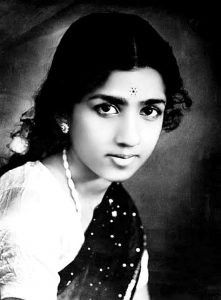
Lata had said: “Three-four months after my father’s death, I had to start working. There was a responsibility on my shoulders to run the household. It was my duty as the eldest child in the house.”
To support her mother and four young siblings, Lata began to get work as an actress and singer in Marathi cinema. She missed out on her childhood and any kind of meaningful schooling to provide for her family. She sang the song Naachu Yaa Gade, Khelu Saari Mani Haus Bhaari for the film Kiti Hasaal (1942), but it was dropped from the final cut. Although she got sporadic work, life became a big struggle for the teenager trying to support an entire family, but she never felt disheartened and once said: “Those were fun times even when I had to go hungry for the entire day. There was no money in my purse. But there was only hope in my heart. And the belief that no matter how tough the future looked, there was always hope for a better tomorrow.”
The determined youngster knew early on she had to move to Mumbai to make it big and hone her skills. The family shifted to the city of cinematic dreams in 1945, and she started learning Hindustani classical music from Ustad Aman Ali Khan.
“There was a drive and determination in me. I was not born to lose,” she said.
In 1945, Lata, along with her younger sister Asha, got a small role in Bollywood film Badi Maa and sang the bhajan Maata Tere Charnon Mein. She slowly started to get songs in small films like Aap Ki Seva Mein (1946) and Subhadra (1946) but didn’t get noticed.
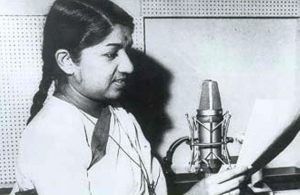
In 1947, Bollywood’s number one singer and Lata’s big inspiration, Noor Jehan, left for Pakistan during Partition, which left a huge void in Hindi cinema. The first big name to spot the hopeful younger singer’s talent was established music director Ghulam Haider, who believed in her when no one else did. When he was told Lata’s voice wouldn’t suit the heroine in Shaheed (1948), he gave her songs in Majboor (1948). The success of that film led other major composers like Anil Biswas, Khemchand Prakash and Naushad to signing her, which finally kickstarted her career. A born perfectionist, she took lessons in Hindi and Urdu diction to perfect her singing.
In 1949, Lata found huge success in super hit films Andaz and Barsaat. In the same year, Lata rose to the very top with record-breaking song Aayega Aanewaala, which was picturised on Madhubala in hit film Mahal. The biggest hit of 1949 not only turned Lata into a huge star but showed movie producers how lucrative sales of film music could be. She never forgot how that song impacted her life and said: “One song that truly changed my career was Aayega Aanewaala in Mahal. It was after this song that people came to know that a new girl called Lata Mangeshkar has come to sing.”
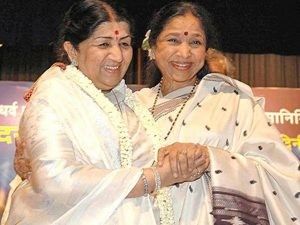
That big success was accompanied by huge heartbreak, when her 16-year-old younger sister Asha eloped with Lata’s personal secretary, 31-year-old Ganpatrao Bhosle. Even though the marriage turned out to be abusive and the now Asha Bhosle became a struggling single mother, that rift would take many decades to heal between the two sisters. They would later become India’s greatest two singers and fierce rivals.
Lata dominated the 1950s, singing for every major music director and leading lady in Hindi cinema. She would deliver unforgettable songs in all-time classics like Deedar (1951), Baiju Bawra (1952), Anarkali (1953), Amar (1954), Shree 420 (1955), Devdas (1955), Chori Chori (1956), India’s first Oscar nominated film Mother India (1957) and so many more. She used her position to battle the male patriarchy and fight for the rights of singers. Lata persuaded the newly launched Filmfare Awards to finally add a category for Best Singer and won the first one in 1959 for Madhumati (1958) song Aaja Re Pardesi. Lata would be nominated every year and in 1970 took the unprecedented step of telling Filmfare to no longer consider her for an award so younger singers could get a chance.
Lata started off the 1960s by singing songs for record-breaking film Mughal-e-Azam (1960), including all-time classic Pyar Kiya To Darna Kya. She swept through the 1960s with unforgettable Bollywood classics like Ajeeb Dastaan Hai Yeh from Dil Apna Aur Preet Parai (1960), Ehsaan Tera Hoga from Junglee (1961), Aap Ki Nazron Ne Samjha from Anpadh (1962), Lag Jaa Gale from Woh Kaun Thi (1964), Aaj Phir Jeene Ki Tamanna Hai from Guide (1965) and Hothon Pe Aisi Baat from Jewel Thief (1967).
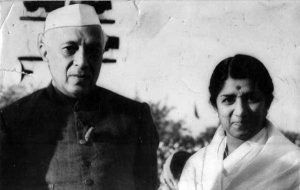
In 1963, she sang the patriotic song Aye Mere Watan Ke Logon to the backdrop of the Sino-Indian war in the presence of Indian prime minister Jawaharlal Nehru and brought him to tears. She campaigned for royalties but didn’t get the backing of other singers and even survived a murder attempt when someone tried to slowly poison her. By now her biggest rival was Asha Bhosle, who was singing the more contemporary western inspired songs.
Despite competition from her younger sister, Lata continued to rule Bollywood in the decades that followed and carried on delivering an incredible number of hits, which remain popular today. These include Chalte Chalte from Pakeezah (1972), Hum Tum Ek Kamre Mein Band Ho from Bobby (1973), Satyam Shivam Sundaram title track (1978), Yeh Kahaan Aa Gaye Hum from Silsila (1981), Nindya Se Jaagi Bahaar from Hero (1983), Mere Haathon Mein from Chandni (1989), Tujhe Dekha To from Dilwale Dulhania Le Jayenge (1995) and countless more.
Lata took Indian film music global on the live circuit and was the first Bollywood singer to perform at Royal Albert Hall in 1974. She regularly released non-film albums, including religious ones, which inspired others to do the same.
She sang for regional language films and was always willing to raise money for charity through live performances.
Even though she was the greatest, the humble singer released the 1994 album Shraddanjali – My Tribute to the Immortals, which paid tributes to other icons. She received many prestigious awards including government honours Padma Bhushan (1969), Padma Vibhushan (1999), and Bharat Ratna (2001), along with Indian cinema’s highest accolade Dada Saheb Phalke Award in 1989.
She would win National Awards for her songs in Parichay (1972), Kora Kagaz (1974) and Lekin (1990). Her many other honours ranged from doctorates to lifetime achievement awards, including a unique one from her government in 2008 to commemorate the 60th anniversary of India’s independence.
Although she slowed down at the turn of the millennium and turned down record-breaking amounts of money to tour, Lata devoted time to others and opened a hospital named after her father. All of today’s popular singers, including current Bollywood queen Shreya Ghoshal, regularly praised Lata and cited her as their greatest influence.
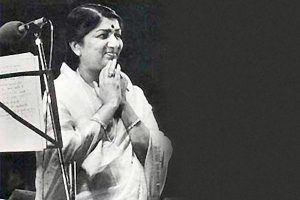
Lata devoted her life to music and never married, and led a fulfilled and happy life. She loved listening to music, watching movies, cooking, cars, and cricket. Perhaps her biggest passion was helping others, and this could be traced to her childhood: “My parents taught me to always help the needy. We saw very hard days. In our home there were free meals for every guest. But when we fell on hard times there was no food for the family. There were days when my siblings and I didn’t eat the entire day. I learnt to share what I had with others. Believe me, the joy you feel in giving is much greater than the joy one feels in receiving.”
Her last major recording was the song Saugandh Mujhe Is Mitti Ki in 2019, which was a tribute to the Indian army and her country.
On January 8, 2022, she tested positive for Covid-19 with mild symptoms and was admitted to hospital. After a valiant battle, her health deteriorated, and India’s nightingale passed away on February 6. Tributes poured in from all over the world for a singer who will never be forgotten and hold a permanent place in people’s hearts.
India’s prime minister Narendra Modi perhaps summed it up best with the sentiments, “I am anguished beyond words. The kind and caring Lata Didi has left us. She leaves a void in our nation that cannot be filled. The coming generations will remember her as a stalwart of Indian culture, whose melodious voice had an unparalleled ability to mesmerise people.”
